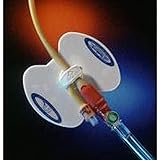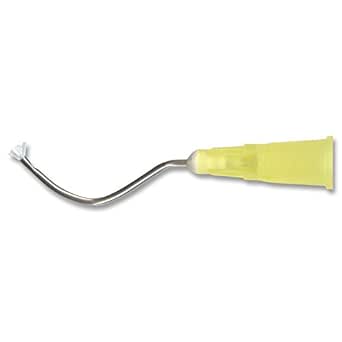Foley catheters are widely used in healthcare settings for a variety of reasons, from post-surgical care to facilitating the management of urinary retention. A crucial component of ensuring patient safety and comfort during Foley catheterization is the proper application of a Foley stat lock. This article will provide a comprehensive guide on how to effectively apply a Foley stat lock, including its importance, materials needed, and a step-by-step procedure.
Understanding the Foley Stat Lock

The Foley stat lock is a medical device designed to secure a Foley catheter in place, minimizing movement and the risk of displacement or trauma to the urethra. Proper application of the stat lock is essential for:
- Preventing catheter-related discomfort
- Avoiding urinary tract infections (UTIs)
- Maintaining catheter patency
- Enhancing patient mobility and comfort
According to the Centers for Disease Control and Prevention (CDC), catheter-associated urinary tract infections (CAUTIs) are among the most common healthcare-associated infections. Proper catheter management, including the use of a stat lock, plays a significant role in minimizing these risks.
Materials Needed

Before proceeding with the application of a Foley stat lock, ensure that you have the following materials on hand:
- Foley catheter of appropriate size
- Foley stat lock device
- Antiseptic wipes
- Gloves (sterile or non-sterile, depending on protocol)
- Scissors (if applicable)
- Securement tape (if necessary)
Step-by-Step Instructions for Foley Stat Lock Application
Step 1: Prepare the Patient

Before starting the procedure, it is important to create a comfortable environment for the patient. This involves:
- Explaining the procedure to the patient, including its purpose and what to expect.
- Ensuring privacy and dignity by draping the patient appropriately.
- Positioning the patient comfortably, ideally in a supine or dorsal recumbent position, to facilitate access to the catheter site.
Step 2: Gather Supplies and Perform Hand Hygiene
Once the patient is prepared, gather all necessary supplies and perform hand hygiene:
- Wash your hands with soap and water or use an alcohol-based hand sanitizer.
- Put on gloves to maintain a sterile field and protect both you and the patient.
Step 3: Clean the Catheter Site

Using antiseptic wipes, clean the area around the catheter insertion site. This step is vital to reduce the risk of infection:
- Start at the catheter insertion point and gently wipe away from the site in a circular motion.
- Allow the area to dry completely to ensure that the antiseptic is effective.
Step 4: Apply the Foley Stat Lock
![Smurfs and the Magic Flute [VHS] Atlas, Jacques](https://m.media-amazon.com/images/I/91p6ByXi1FL._AC_SY500_.jpg)
Now that the site is cleaned, you can proceed to apply the Foley stat lock:
- Locate the adhesive backing on the Foley stat lock and peel it away carefully.
- Position the stat lock on the skin, ensuring it is placed below the catheter entry point to allow for securement without tension on the urethra.
- Press down firmly on the stat lock to ensure it adheres well to the skin.
- Thread the Foley catheter through the opening of the stat lock, ensuring it is snug but not too tight to restrict urine flow.
Step 5: Secure the Catheter
After threading the catheter through the stat lock, make sure it is securely fastened:
- Check that the catheter is not pulling or causing discomfort to the patient.
- If necessary, use securement tape to further stabilize the catheter, especially in cases where patient mobility is expected.
Step 6: Conduct a Final Check
Once the stat lock is in place, conduct a final assessment:
- Ensure that there is no tension on the catheter.
- Verify that the catheter is properly draining into the collection bag.
- Assess the patient’s comfort level and address any concerns they may have.
Step 7: Document the Procedure

Documentation is a critical aspect of patient care. Record the following in the patient’s medical chart:
- The date and time of the Foley stat lock application
- The type and size of the Foley catheter used
- Any complications or issues encountered during the procedure
- The patient’s response and comfort level post-application
Case Studies and Examples
To further emphasize the importance of proper Foley stat lock application, consider the following cases:
- A study published in the Journal of Urology noted that hospitals implementing strict Foley catheter management protocols, including the use of stat locks, saw a 30% reduction in CAUTIs over six months.
- In an analysis of patient comfort levels post-procedure, a survey indicated that patients with properly applied stat locks experienced significantly less discomfort and anxiety compared to those without securement devices.
The proper application of a Foley stat lock is a vital procedure that can significantly enhance patient comfort and reduce the risk of complications such as urinary tract infections. By following the step-by-step instructions outlined in this article, healthcare professionals can ensure that Foley catheters are securely and safely managed. Remember to always prioritize patient care by maintaining a sterile environment, documenting procedures accurately, and addressing any concerns the patient may have throughout the process. In doing so, healthcare providers can deliver the highest standard of care and improve patient outcomes.